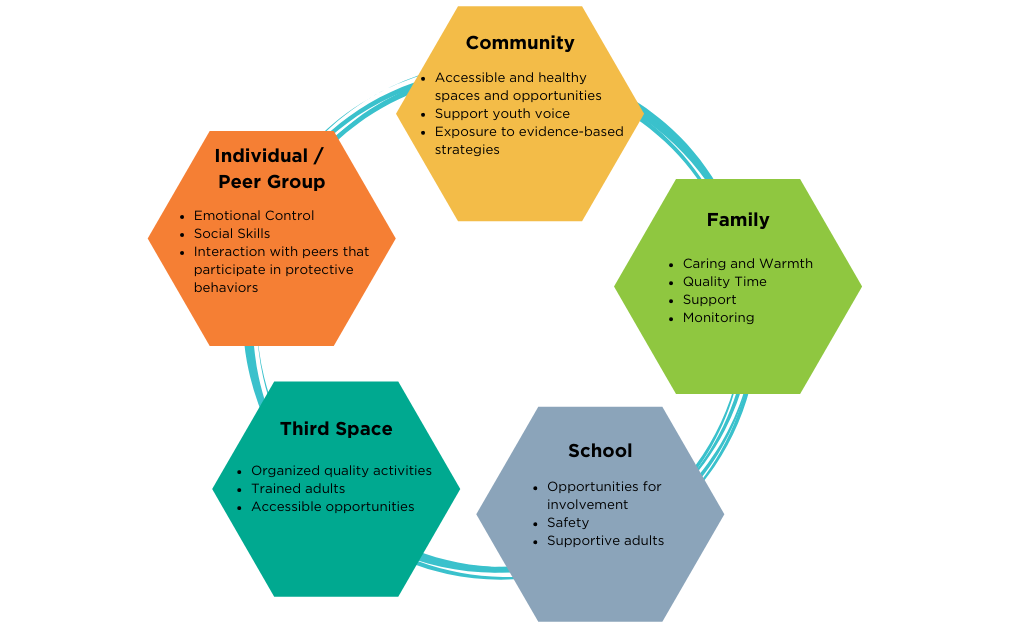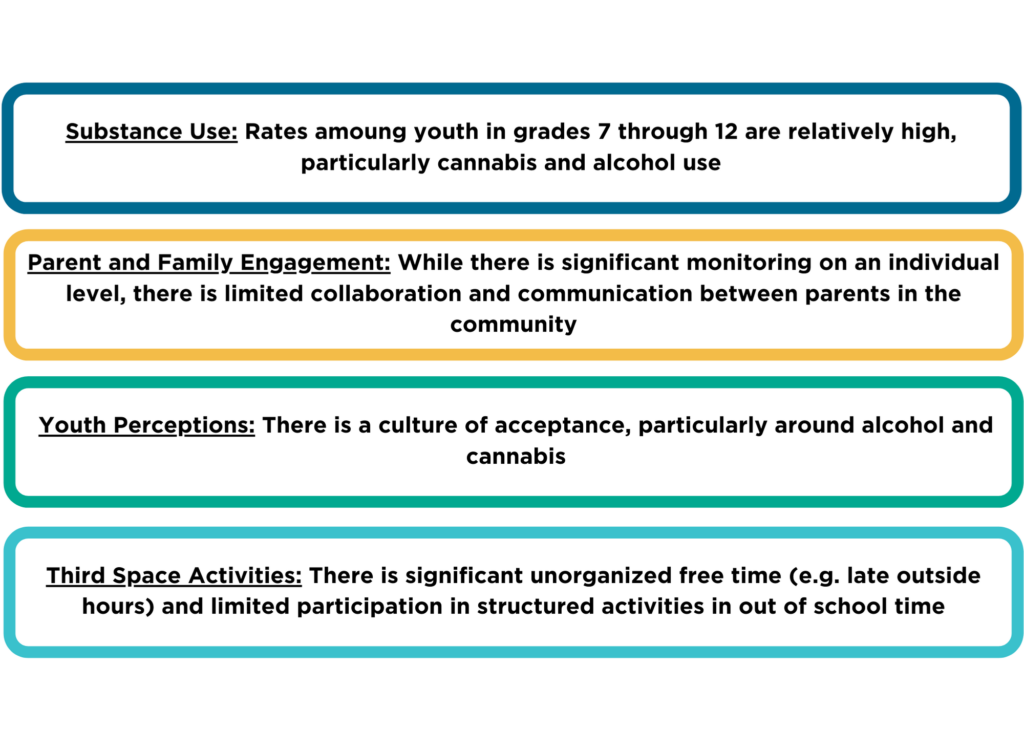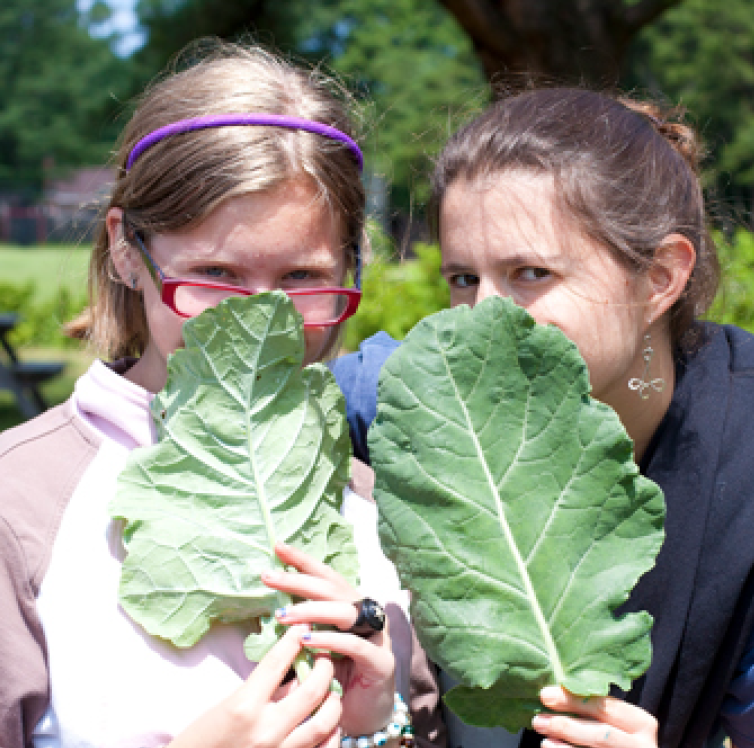Children and youth spend up to 80 percent of their waking hours outside of school and home (also known as the third space), while 24% of young people in Vermont are alone and unsupervised after the school day ends. This is an important time for young people and why we are focused on how afterschool, third space programs, and other out-of-school time programs can support positive youth development.
High-quality afterschool programs promote positive youth development and offer a safe space where youth can explore their potential while reducing risky behaviors. Positive youth development emphasizes building on youth’s strengths, creating opportunities to help youth achieve goals, fosters healthy relationships, and promotes protective factors.
Increasing Protective Factors
There are many domains that youth interact with frequently and they can have protective impacts on a youth’s wellbeing. These include:

Here are some individual activities that sports coaches, third space leaders, parents, and community members can do to increase protective factors:
- Sign up for a Youth Mental Health First Aid Training
- Join a VYP Parent Group
- Sign up for a VYP workshop
- Read our positive youth development guidebook
Here are some activities Vermont Afterschool is doing to increase protective factors:
Afterschool & Third Space Programs as Primary Prevention
What happens when youth aren’t at home or at school (also known as the third space) really matters in a teen’s life. It is important that young people are encouraged to engage in quality activities during the out-of-school time. Whether it’s playing on a sports team, volunteering in the community, learning new skills, practicing for a performance, connecting with caring adult mentors, or hanging out with friends in a safe place, these programs allow teens to further develop their social skills and build emotional resilience. They provide healthy outlets for connection and engagement.
Since afterschool and third space programs have the potential to serve as protective factors in and of themselves, as well as present youth with opportunities to develop or experience other protective factors, they can be considered a primary prevention strategy. The goal is to change the environment around youth in order to offer them healthy opportunities for engagement. For example, VYP focuses upstream by exploring the societal and environmental factors (“causes of the causes”) that lead to risk and protective factors that influence the behaviors of youth. With this information, communities are able to create strategies that support increasing protective factors in youth through healthy built environments.
- Approximately 24% of Vermont youth in grades k-12 are currently enrolled in afterschool programs. Of those not currently in programs, 39%, or more than 26,000 children and youth, would participate if a program were available (America After 3PM).
- Vermont students who participate in up to 19 hours of extracurricular activities each week are less likely to use alcohol, tobacco, or marijuana than those who do not participate in any activities (VT YRBS).
- 77% of Vermont parents agree that afterschool programs keep kids safe and out of trouble (America After 3PM).
Quick Facts about Substance Misuse
- According to the 2019 Vermont Youth Risk Behavior Survey (YRBS), one in two high school students have tried Electronic Vapor Products (these include e-cigarettes and vapes). JUUL is the most commonly used electronic vapor product with 8 in 10 current users reporting using this product.
- 58% of 12 grade students report having tried and electronic vapor product and 38% reported using an electronic vapor product in the last 30 days.
- Among high school students, just over half have ever drank alcohol.
- 2 in 5 high school students have tried marijuana.
YRBS is completed by middle school and high school students across Vermont every two years. Sponsored by the Vermont Department of Health and the Vermont Agency of Education, the survey is part of a national initiative that is used to monitor risk behaviors that contribute to death and disability. Each round, about 20,000 students in Vermont complete the 109-item high school version of the survey. To read the full 2019 YRBS report, please visit here.
To learn more about vaping, substance misuse, common signs of substance misuse, and resources please see our prevention guidebook.
Key Findings from VYP

According to the 2019 Vermont Youth Project Data:
- 10% of high school students reported their parents would not care if they smoked marijuana
- 75% of middle school students reported their parents know the parents of their friends
- 28% of 11th and 12th graders report staying out past midnight once or more a week.
- 15% of middle school students report hanging out at a friend’s house with no adult present.
To learn more about building environments to increase protective factors of youth in communities please visit VYP.

